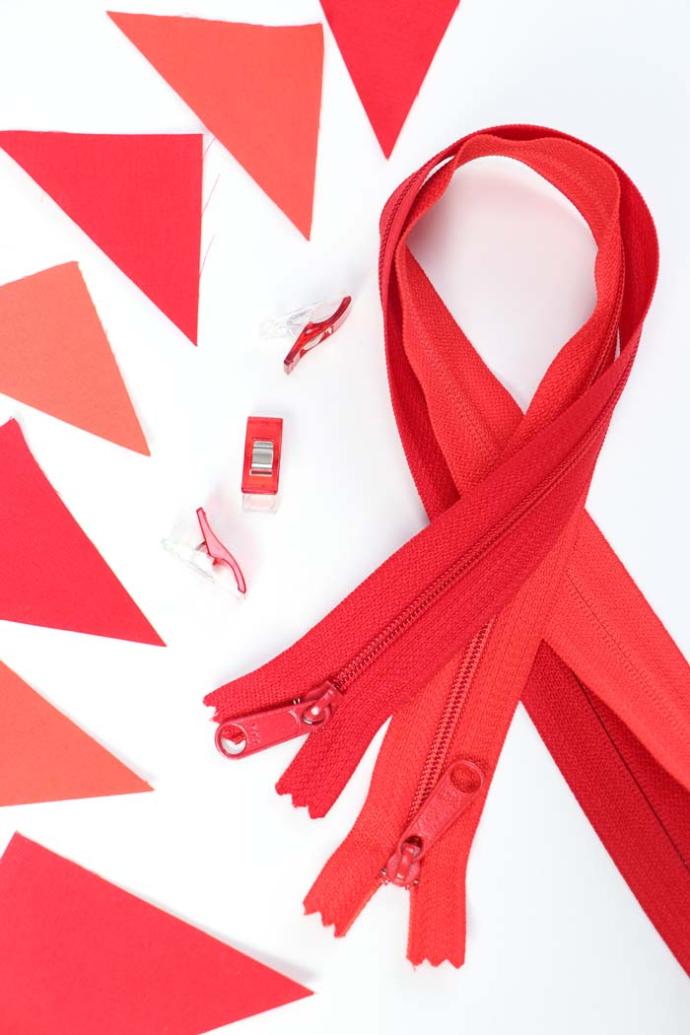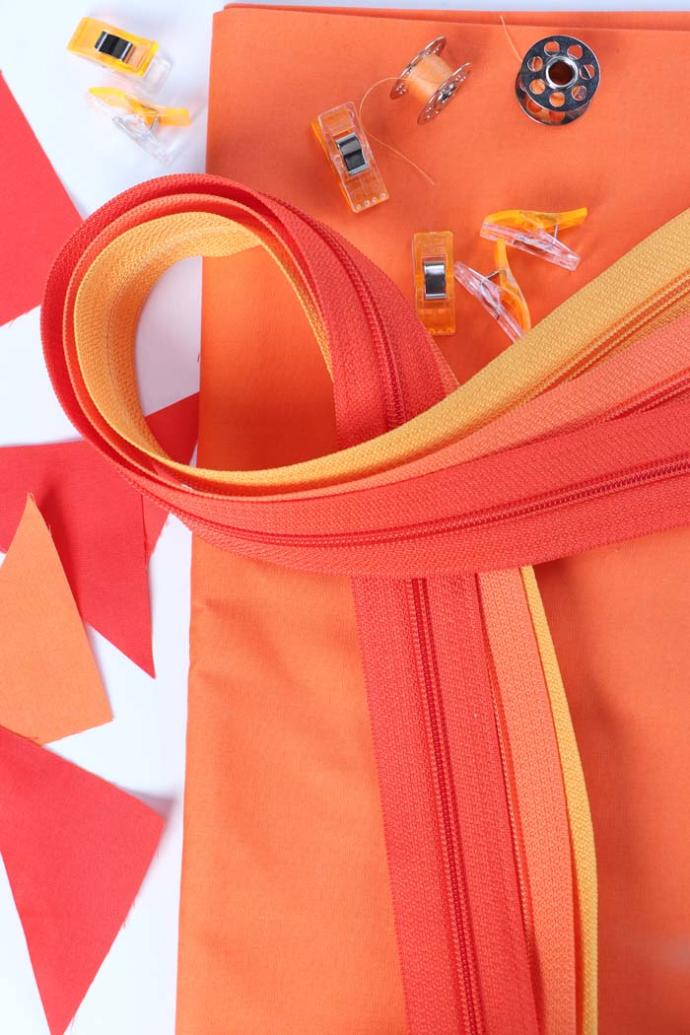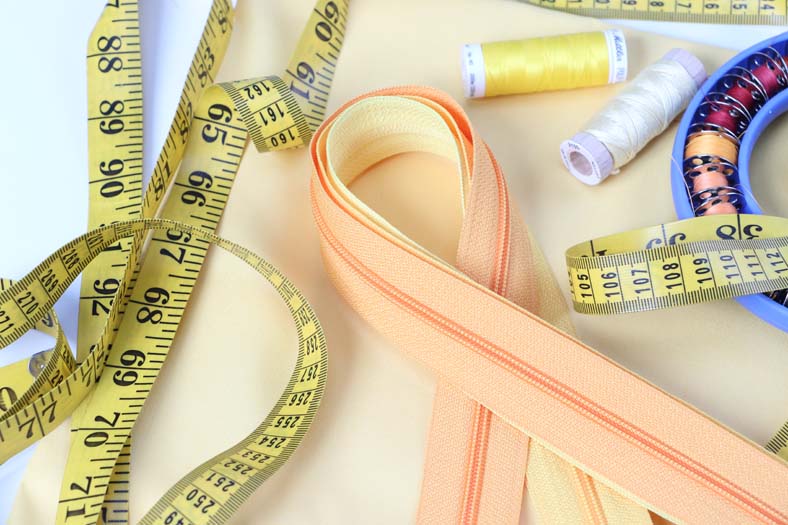February is National Cancer Prevention Month. This is a great time to wear a variety of different colored ribbons to support all of the different forms of cancer or wear lavender as a way to show support for general cancer awareness.
To learn more about what different colored ribbons mean, see our graphics on what cancers correspond with each color of the rainbow.
And to learn ways you can potentially reduce your risk of cancer, we've compiled a list of the 12 most-studied, known, or suspected risk factors for cancer, as determined by The National Cancer Institute. Read on to learn more about these risk factors.
Are you a sewist looking for ways to spread cancer awareness? Check out our FREE Cancer Awareness Course full of patterns and videos to inspire your next project.
Age
Advancing age is the most important risk factor for cancer overall and for many individual cancer types. As we age, our chances of developing certain cancers increases.
While cancer diagnoses are more common in those over 60, cancer can develop at any age so it is important to take appropriate recommended screening procedures regardless of age.
Blood Cancer Awareness:

Color:
Red
Month:
September
The three most common types of blood cancer are leukemia, lymphoma,
and myeloma.
Risk Factors:
Previous cancer treatment,
genetic disorders, family history
Alcohol
"Alcohol consumption is connected with a higher risk of developing cancers of the mouth, throat, esophagus, larynx, liver, and breast" (cancer.gov).
For those who consume alcohol, it is best to practice moderation — up to one drink per day for women and up to two drinks per day for men.
While some have claimed red wine has anti-cancer properties, there has been no evidence to support that it reduces the risk of developing cancer.

Cancer-Causing Substances
Exposure to a cancer-causing substance does not necessarily mean that you will develop cancer, but it does raise your risk.
It’s important to be aware of substances known to raise the risk of developing cancer -— substances such as asbestos, cadmium, formaldehyde, and soot.
To see a full list of the known cancer-causing substances, visit https://www.cancer.gov/about-cancer/causes-prevention/risk/substances
Kidney Cancer Awareness:
Color:
Orange
Month:
March
Kidney cancer
is about twice
as common
in men
as compared
to women.
Risk Factors:
Obesity,
tobacco,
exposure to trichlorethylene

Chronic Inflammation
Not all inflammation is chronic. Inflammation is a regular part of how the body heals injured tissue. Chronic inflammation is when inflammation may begin without injury and does not end when it should. This can potentially cause DNA damage and lead to cancer.
Diet
As cancer rates increase in younger generations, researchers have begun looking into what lifestyle changes these younger generations have made that have led to this increase.
One notable difference between generations is that modern diets contain significantly more ultra-processed foods than the average American diet did in previous generations.
While with few exceptions research has not shown any particular food substances to be cancer causing or cancer preventing, the modern reliance on processed foods does appear to be impacting cancer rates.
Bone Cancer Awareness:
Color:
Yellow
Bone cancer is most frequently diagnosed in children and adolescents.

Month:
July
Risk Factors:
Ionizing radiation exposure, chemotherapy, other bone diseases
Hormones
“Studies have also shown that a woman’s risk of breast cancer is related to the estrogen and progesterone made by her ovaries” (cancer.gov).

A long-time and high exposure to these hormones can be caused by starting menstruation early, going through menopause late, being older at first pregnancy, and never having given birth.
From 1940-1971, some women were given Diethylstilbestrol (DES), a synthetic form of estrogen.
Women who took DES for pregnancy have a higher risk of developing breast cancer, and their daughters have an increased risk of cancer of the vagina or cervix.
Liver Cancer Awareness:

Color:
Green
Month:
October
Liver cancer
is the
third leading
cause of
cancer death.
Risk Factors:
Hepatitis B and C, heavy alcohol use, type 2 diabetes
Immunosuppression
When the body is given immunosuppressants, its immune system is less able to detect and destroy cancer cells or fight off infections that cause cancer.
This is made worse by infections like HIV which further weakens the immune system and is linked to a higher risk of several forms of cancer.
Infectious Agents
"Certain infectious agents, including viruses, bacteria, and parasites, can cause cancer or increase the risk that cancer will form" (cancer.gov).
These agents can increase the risk of cancer in three ways — by disrupting signaling that keeps cell growth and proliferation in check, by weakening the immune system, or by causing chronic inflammation.
Prostate Cancer Awareness:
Color:
Light Blue
Month:
September
About
1 in 44 men
will die
of
prostate
cancer.
Risk Factors:
Older age,
family history,
lynch syndrome, inherited variants of BRCA1 or
BRCA2 gene

Obesity
Excess visceral fat leads to chronic inflammation and hormone dysregulation. Both these factors increase the risk of cancer. “Research repeatedly indicates that approximately 5% of cancer cases in men and 10% of cancer cases in women are linked to excess body weight” (cancer.gov).
Radiation
“Radiation of certain wavelengths, called ionizing radiation, has enough energy to damage DNA and cause cancer” (cancer.gov). This includes radon, x-rays, gamma rays, and other forms of high-energy radiation.
Lower-energy radiation, like light or the energy from cell-phones, has not been linked to a higher risk of cancer.
Colorectal Cancer Awareness:
Color:
Dark blue
30% of
Colorectal
Cancer
diagnoses are
in people
under the age
of 55.

Month:
March
Risk Factors:
Cholecystectomy, history of inflammatory bowel disease, heavy alcohol use
Sunlight
Sunlight, and other light sources designed to mimic sunlight like sunlamps and tanning beds, produce ultra-violet radiation which can lead to early-aging and damage to the skin cells.
This damage can lead to skin cancer.
People of all ages and skin tones can be affected by sunlight. This is why it’s important to wear sunscreen of at least SPF 15 and limit exposure to the sun.
Tobacco
“Tobacco use is a leading cause of cancer and of death from cancer” (cancer.gov).
Many chemicals in tobacco cause damage to the DNA.

There is no safe level of tobacco use and even secondhand smoke is enough to cause negative effects.
Pancreatic Cancer Awareness:

Color:
Purple
Month:
November
Pancreatic tumors are either exocrine or neuroendocrine (endocrine) tumors.
Risk Factors:
Type 2 diabetes, tobacco use, chronic pancreatitis, obesity
Test your knowledge
Check answers above and comment how many you got right!
How to Support?
There are countless ways to help support cancer prevention. The easiest way is to keep the conversation going. Spread awareness by wearing a cancer ribbon this month, post on social media, and tell others of how they can support this cause. Consider making your next sewing project with a wide variety of colored fabrics.
If you have the means, donate to trusted organizations that focus on medical research and patient care like the American Cancer Society (donate here to have ByAnnie match your donation). If someone you know is being affected by one of these cancers, consider helping out with daily tasks like meals, childcare, groceries, or rides to appointments.
While cancer is scary, if we stand together as a community to support those fighting battles against cancer, whether it be as a patient, caregiver, or medical professional, we can make the battle a little easier for everyone.
Want to make a project to support cancer prevention? Use the chart below to find solids from your favorite fabric companies.
Disclaimer
Any and all content produced and displayed by ByAnnie.com is for educational and informative purposes only; it should not and does not replace a diagnosis by a medical professional. Statements made by ByAnnie.com are not medical advice. If any questions arise, contact your doctor or other qualified professional. Unless stated otherwise, the opinions and statements made are not by medical professionals. Reliance and usage of ANY information from ByAnnie.com is done solely at your own risk. None of the staff members of ByAnnie are, or claim to be medical professionals. We urge you to consult with a medical professional to answer any questions or concerns that you may have. Stay healthy, stay safe, and happy stitching!
Resources
National Cancer Institute's Cancer and Prevention Page —
https://www.cancer.gov/about-cancer/causes-prevention
American Society of Hematology —
https://www.hematology.org/
American Cancer Society's Kidney Cancer Page —
https://www.cancer.org/cancer/types/kidney-cancer/about.html
American Cancer Society's Bone Cancer Page —
https://www.cancer.org/cancer/types/bone-cancer/about.html
American Cancer Society's Liver Cancer Page —
https://www.cancer.org/cancer/types/liver-cancer/about.html
American Cancer Society's Colorectal Cancer Page —
https://www.cancer.org/cancer/types/colon-rectal-cancer/about.html
American Cancer Society's Prostate Cancer Page —
https://www.cancer.org/cancer/types/prostate-cancer.html
American Cancer Society's Pancreatic Cancer Page —
https://www.cancer.org/cancer/types/pancreatic-cancer/about.html
Forbes "Cancer Rates are Skyrocketing" by
Dr. Sai Balasubramanian —
https://www.forbes.com/sites/saibala/2025/01/28/cancer-rates-are-skyrocketing---here-are-7-things-you-can-do-to-reduce-your-risk/
#SewPINK: National Cancer Prevention